So you love houseplants, but you have pets and want to keep your furry friends safe? You’ve come to the right spot! In this article, we’ll explore the top non-toxic houseplants to keep if you have pets and some growing tips to keep your plants happy and healthy.
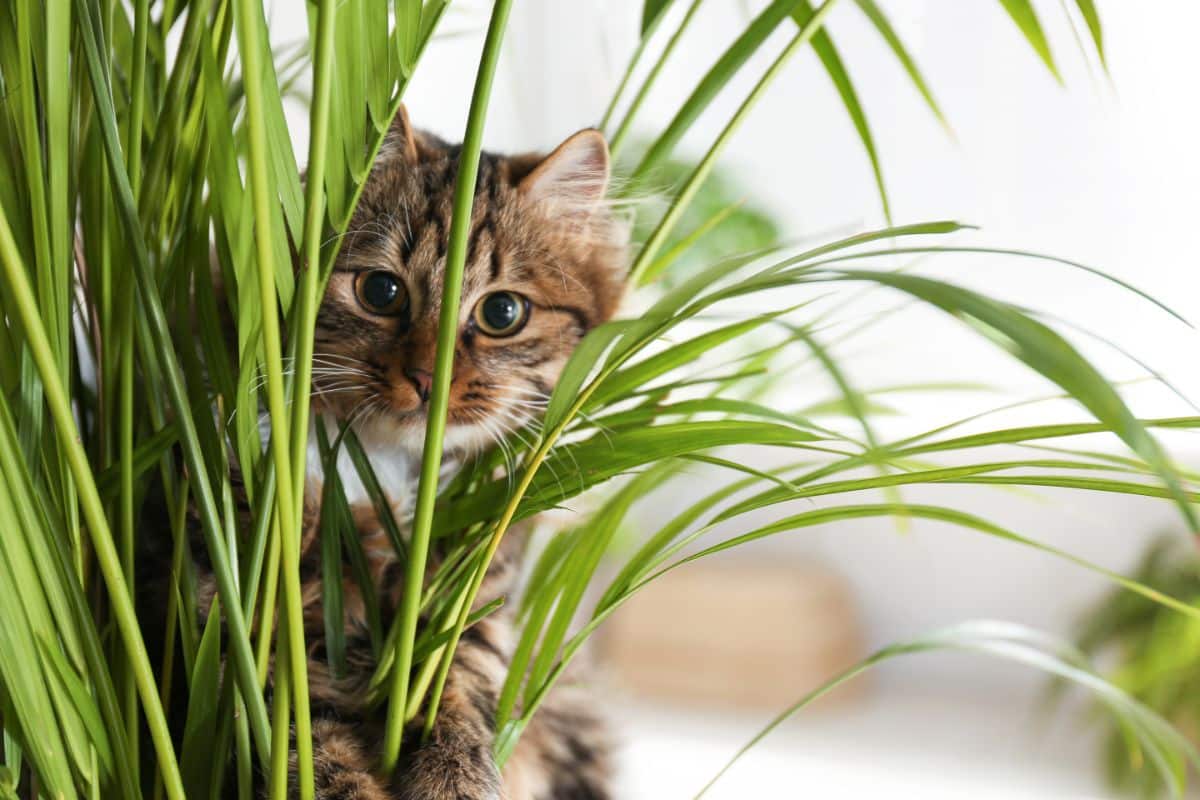
Jump to:
- 12 best pet-safe houseplants
- 1. Spider plants (Chlorophytum comosum)
- 2. African violets (Saintpaulia spp.)
- 3. Prayer plants (Maranta leuconeura)
- 4. Staghorn Fern (Platycerium spp.)
- 5. Orchids (Phalaenopsis spp.)
- 6. Purple passion plant (Gynura aurantiaca)
- 7. Ponytail palm (Beaucarnea recurvata)
- 8. Rattlesnake plant (Goeppertia insignis)
- 9. Watermelon peperomia (Peperomia argyreia)
- 10. Parlor palm (Chamaedorea elegans)
- 11. Venus flytrap (Dionaea muscipula)
- 12. Inchplant (Tradescantia zebrina)
- Tips on keeping pets away from your plants
- Frequently asked questions
- Summary
12 best pet-safe houseplants
Here are our top 12 favorite pet-friendly houseplants. These non-toxic plants offer lots of bold color in their leaves and flowers and are beginner-friendly too! What’s not to love?
1. Spider plants (Chlorophytum comosum)
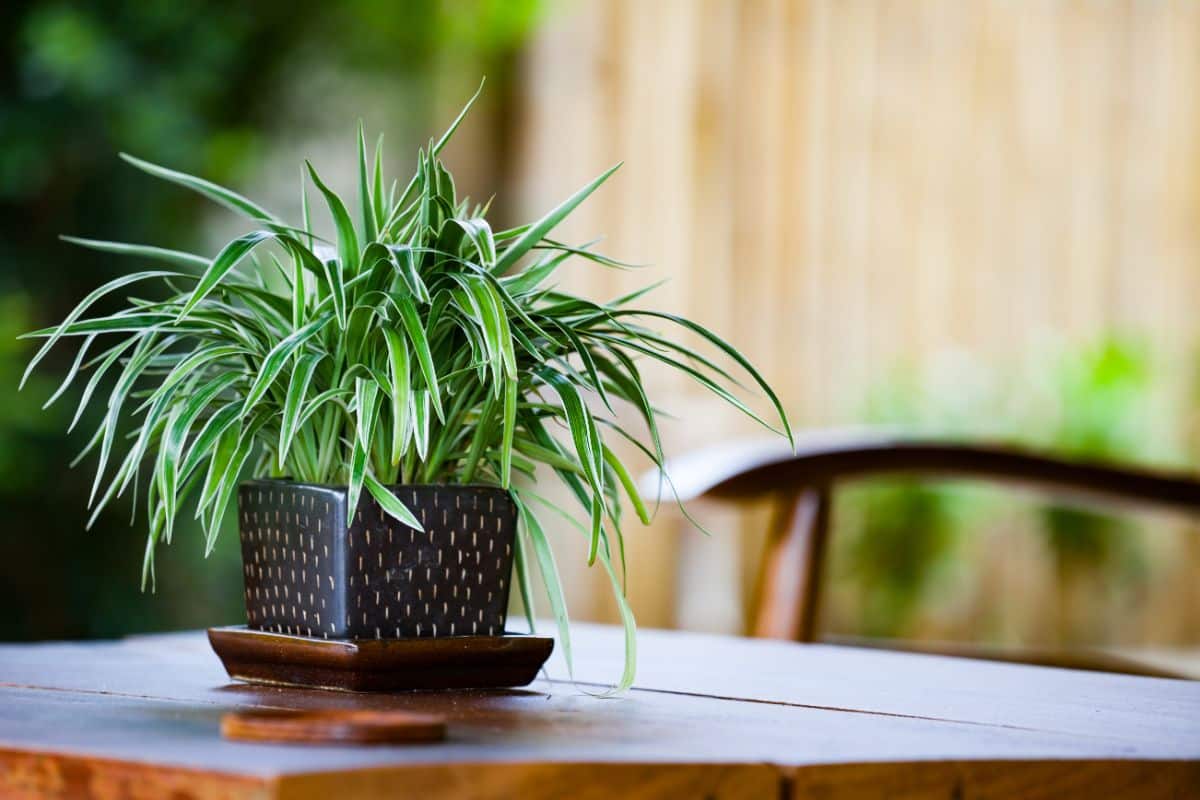
| Plant name: | Spider plants |
| Lighting: | Bright, indirect light |
| Watering: | Moderate |
| Fertilizer rates (during the growing season): | Approximately monthly |
| Other notes: | Spider plants are easily propagated via planting “spiderettes” in soil. |
- Reverse Ocean Spider plant in 4 inch pot
- Easy to care: Prefers bright, indirect light or artificial light
- Keep evenly moist, not wet or dry
- USDA Zones 9-11 (for outdoor planting), Indoors these plants will thrive in any zones
- Mature Size 24" W x 36" H
- Light Needs: Full Sun to Partial Sun
Some of the most popular plants around, spider plants have cascading, grass-like leaves which can be found in either solid green or variegated green and white. Plants grow happily in hanging baskets or in tabletop planters and are great plants for beginners to keep. When properly maintained, spider plants will bloom small white flowers on long stems, which mature into baby spider plants, known as “spiderettes.”
While spider plants are pet safe, their grass-like leaves can make them super appealing to pets that love to munch on grass. To keep your plants safe, try growing your spider plants in a hanging basket or spray your plants with a pet deterrent spray.
2. African violets (Saintpaulia spp.)
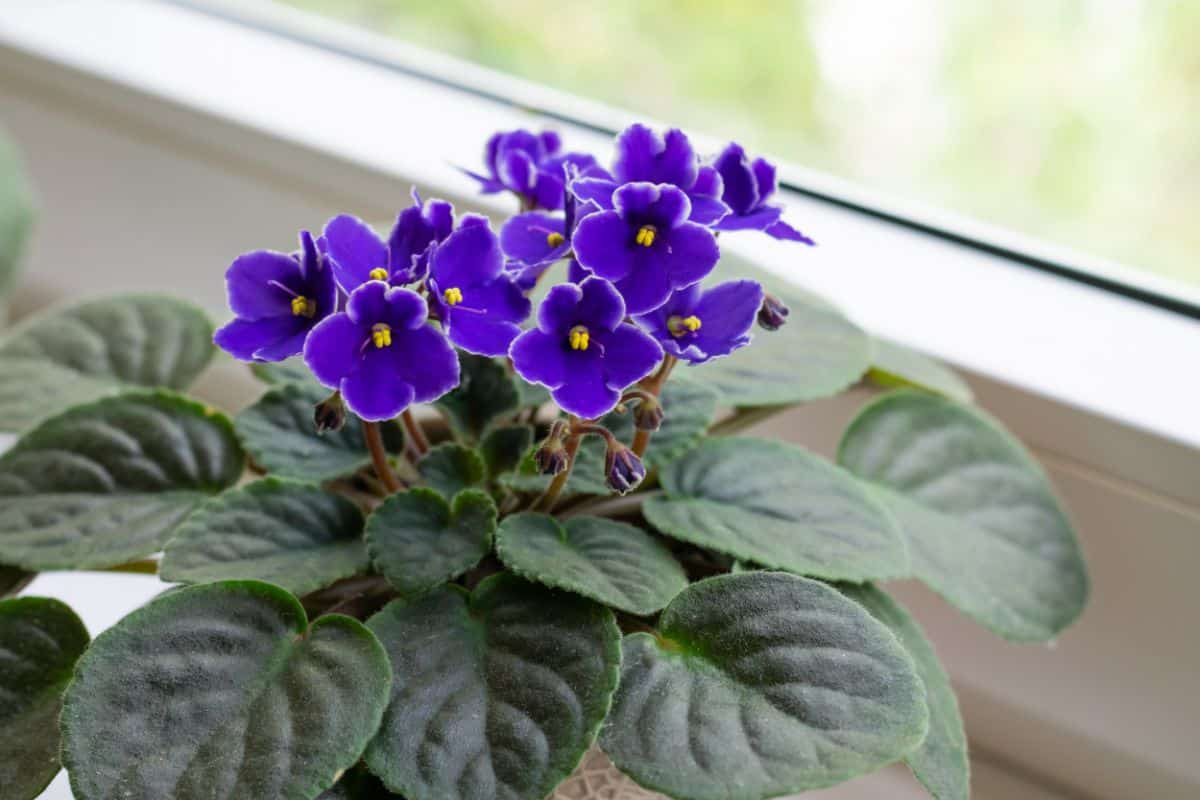
| Plant name: | African violets |
| Lighting: | Bright, indirect light |
| Watering: | Moderate |
| Fertilizer rates (during the growing season): | Every 4 to 6 weeks |
| Other notes: | Keep African violet leaves dry by bottom watering. |
- The variety and color sent will vary with the season. Three Novelty African Violet, growers choice
- The world's best blooming house plant
Ever popular African violets are ideal potted plants, known for their small, compact size and low maintenance care requirements. African violet leaves have a soft and fuzzy texture, while flowers come in a range of colors and shapes, including some blooms with frilly margins or bi-colored petals. These happy little plants can bloom for most of the year, with individual flowers lasting up to 3 weeks.
Most keepers know the standard rule that African violet leaves should be kept dry. Water droplets on the leaves can promote issues like leaf spotting and mold. To prevent this, place your plant in a self-watering planter or locate your violet on a saucer and always water from the bottom.
3. Prayer plants (Maranta leuconeura)
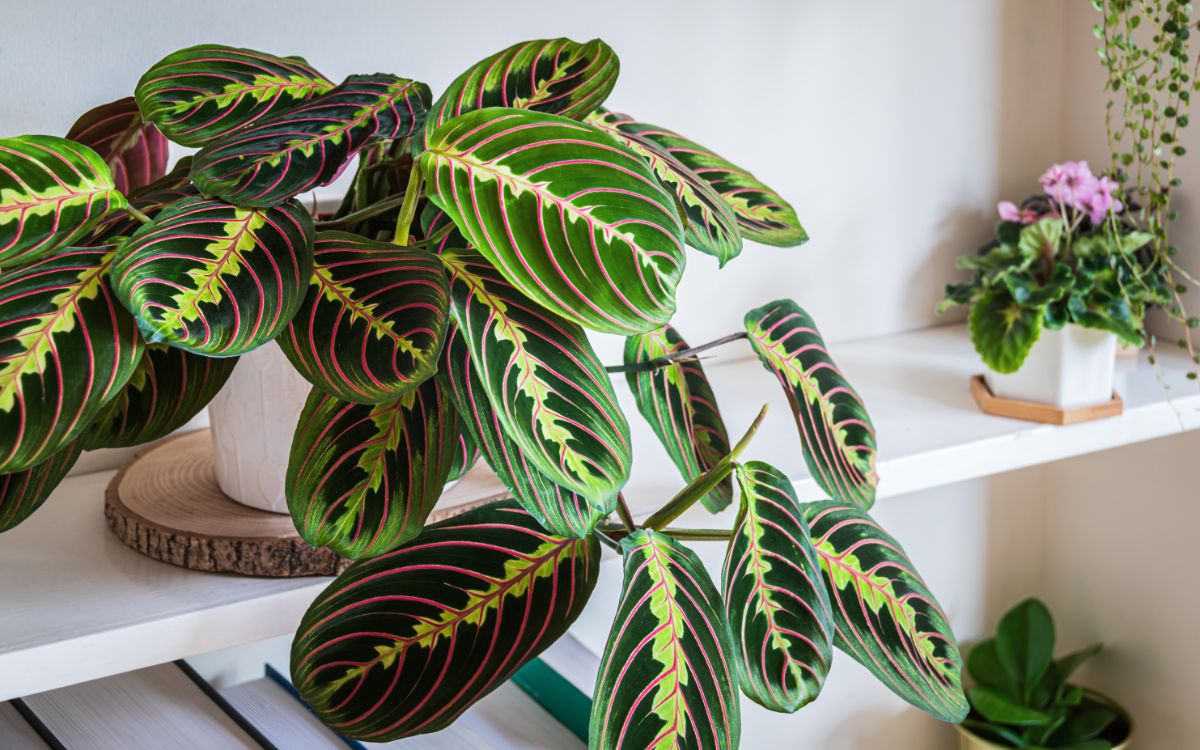
| Plant name: | Prayer plants |
| Lighting: | Bright, indirect light |
| Watering: | Moderate |
| Fertilizer rates (during the growing season): | Every 2 weeks |
| Other notes: | Avoid overwatering your plant by watering only when the top 1" of soil is dry to the touch. |
- Red prayer plant is originated from Brazil, and a popular and attractive housplant.
- LEMON LIME PRAYER PLANT: Our California Tropicals Lemon Lime Prayer Plant is the perfect addition to any home decor. This rare variety of Maranta has beautiful variegated leaves in shades of lime and...
Primarily kept for their stunningly patterned foliage, prayer plant leaves feature a medley of bright colors in greens, pinks and white. These plants are named after their leaves’ ability to move throughout the day for water conservation, turning upwards in the evening as if in prayer. When properly maintained, prayer plants may also bloom small purple flowers that can last for several months.
Very forgiving plants, prayer plants prefer moderate watering and bright, indirect light for their delicate leaves. Too much bright sun can cause leaf scorching and color loss, so you’ll want to shade your plants with a sheer curtain if you have a particularly bright window. These plants are easily propagated in water too if you want to grow more plants to share with friends and family.
4. Staghorn Fern (Platycerium spp.)
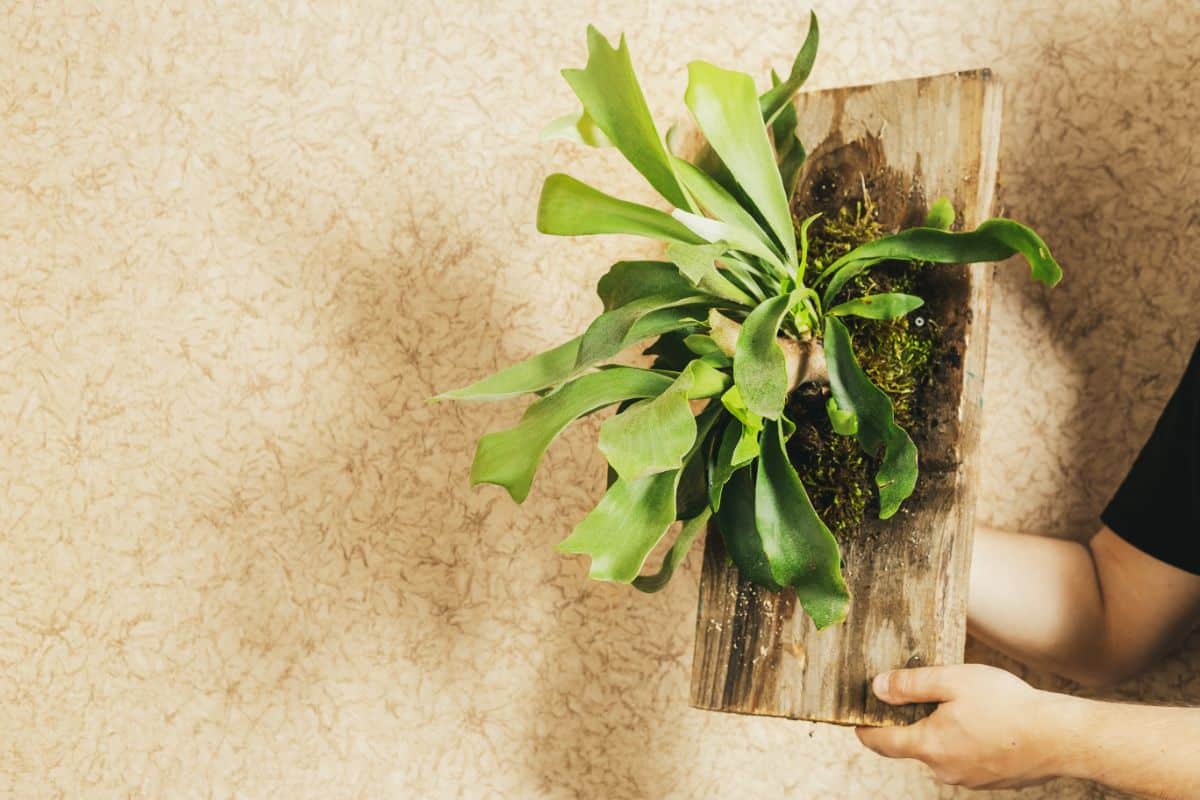
| Plant name: | Staghorn fern |
| Lighting: | Bright, indirect light |
| Watering: | Moderate |
| Fertilizer rates (during the growing season): | Monthly |
| Other notes: | Staghorns absorb water via their leaves and roots and prefer higher than average humidity. |
- All of our listings have very representative pictures of what you would receive.
- This plant comes fully rooted in a 4" pot, ready to grow in and your beautiful home or your office.
- Enhance Your Environment
- Large Staghorn Plant in 6'' hanging pot.
- Provide very bright, indirect light
- care guide and organic plant food included.
Staghorn ferns are popular and unusual-looking houseplants with forked and fuzzy, blueish-gray leaves, which are said to resemble a stag’s antlers. Native to Southeast Asia, Australia and Africa, staghorn ferns naturally grow as epiphytes, harmlessly anchoring themselves to trees (and even rocks) and absorbing most of their moisture from the air.
As houseplants, staghorn ferns can be kept in pots, but many keepers opt to grow them as wall-mounted specimens instead. For the DIY-minded, staghorn ferns can be easily anchored to a wooden plaque or piece of driftwood with a bit of clear fishing wire. Then just place your plant in a spot with bright, indirect light and provide them with a little extra humidity with a daily mist of water or a nearby humidifier.
5. Orchids (Phalaenopsis spp.)

| Plant name: | Orchids |
| Lighting: | Bright, indirect light |
| Watering: | Moderate |
| Fertilizer rates (during the growing season): | Every 1 to 2 weeks |
| Other notes: | Prefers higher than average humidity levels. |
- Dendrobium Orchid Plant Pot: Dendrobium is a group of Orchids with nearly 2000 species. While the appearance of the plants varies from species to species, they are all known for their graceful green...
- Orchids are not in buds or flower. Blooming Size | Blooming Soon
Orchids are synonymous with color and beauty. There are thousands of different orchid species, most of which come from tropical forests, although some can be found in more arid regions. Approximately 70% of all orchids, grow as epiphytes, anchoring themselves to trees via their aerial roots.
While all orchids are classified as “pet safe,” phalaenopsis or moth orchids are the usual orchid choice for most houseplant keepers. These low maintenance orchids offer loads of bright colors, with flowers appearing in white, purple, blue and other hues. Simply provide them with some bright, indirect light and a bit of extra humidity with a pebble tray or a nearby humidifier.
6. Purple passion plant (Gynura aurantiaca)
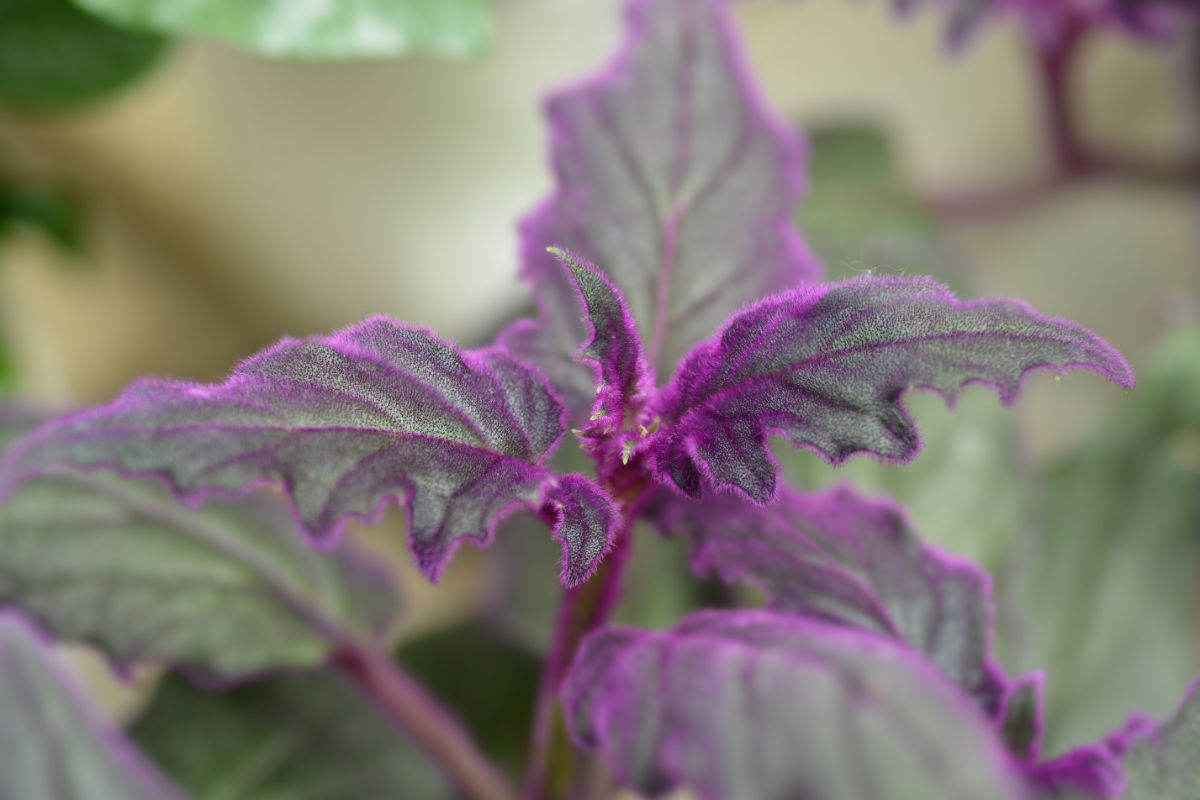
| Plant name: | Purple passion plant |
| Lighting: | Bright light |
| Watering: | Moderate |
| Fertilizer rates (during the growing season): | Monthly |
| Other notes: | Short lived plant; propagates easily in water. |
- This unique plant has dark green leaves with fine purple hairs that give it that vibrant color. It's fuzzy to the touch, and though it appears to be delicate, it's one tough plant. It can even produce...
- Purple Passion Plant, Gynura Aurantiaca Plant Purple Velvet Passion Ready To Grow
Also known as velvet plants, purple passion plants are gorgeous, vibrant purple gems that are sure to be the stars of your houseplant collection. A relative of the common aster, purple passions are native to Indonesia and Java, where they grow as vining plants that sprawl across the jungle floor and can reach up to 25’ in length.
When kept as houseplants, purple passion plants are easy-going plants that are ultra beginner-friendly. They prefer bright light and moderate watering, but can be susceptible to root rot, so avoid soggy soil. Since they’re fast growing, they appreciate a regular organic fertilizer schedule and they work well as tabletop or hanging plants.
Keep in mind that purple passions are short lived plants and only last for about 3 to 5 years. Keep your plants going longer by propagating these beauties in water.
7. Ponytail palm (Beaucarnea recurvata)
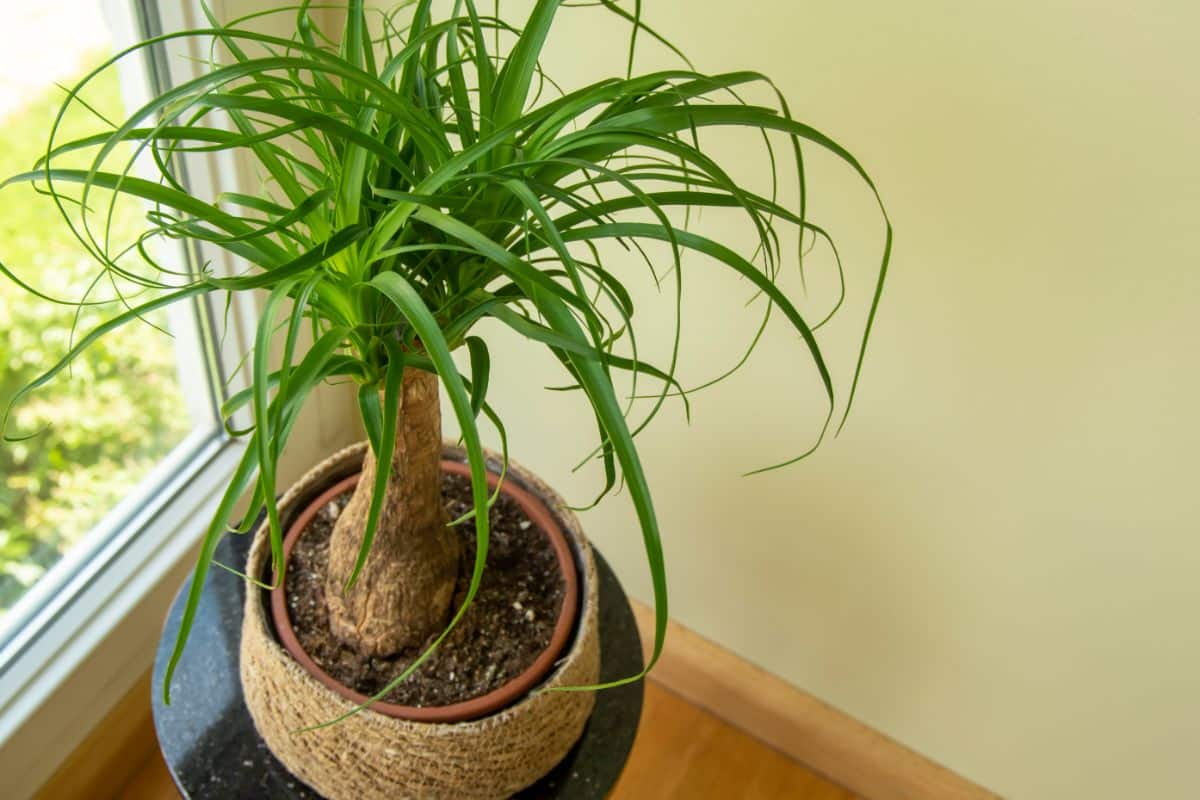
| Plant name: | Ponytail palm |
| Lighting: | Bright light |
| Watering: | Low |
| Fertilizer rates (during the growing season): | Monthly |
| Other notes: | As houseplants, ponytail palms can grow up to 4’ high. |
- The common characteristics of this plant include a bulbous trunk, which is used to store water, and its long, hair-like leaves that grow from the top of the trunk like a ponytail, giving the plant its...
- 『𝗜𝗡𝗖𝗟𝗨𝗗𝗘𝗦』 (1) Beautiful live, easy to grow Ponytail Stump Palm houseplant. This evergreen plant has palm-like slender leaves that emerge from a bulbous, grayish trunk.
Ponytail palms are funky plants with long, curling, bright green leaves and thick bulbous stems. Those thick stems are actually key to this plant’s survival as they’re used for water storage during periods of drought. Despite their names, these plants are actually not palms at all, but are actually members of the asparagus family.
Thriving in bright light, ponytail palms don’t need lots of moisture and should only be watered when the top 1 to 2” of soil is dry to the touch. Watering should be reduced even further during winter dormancy.
8. Rattlesnake plant (Goeppertia insignis)
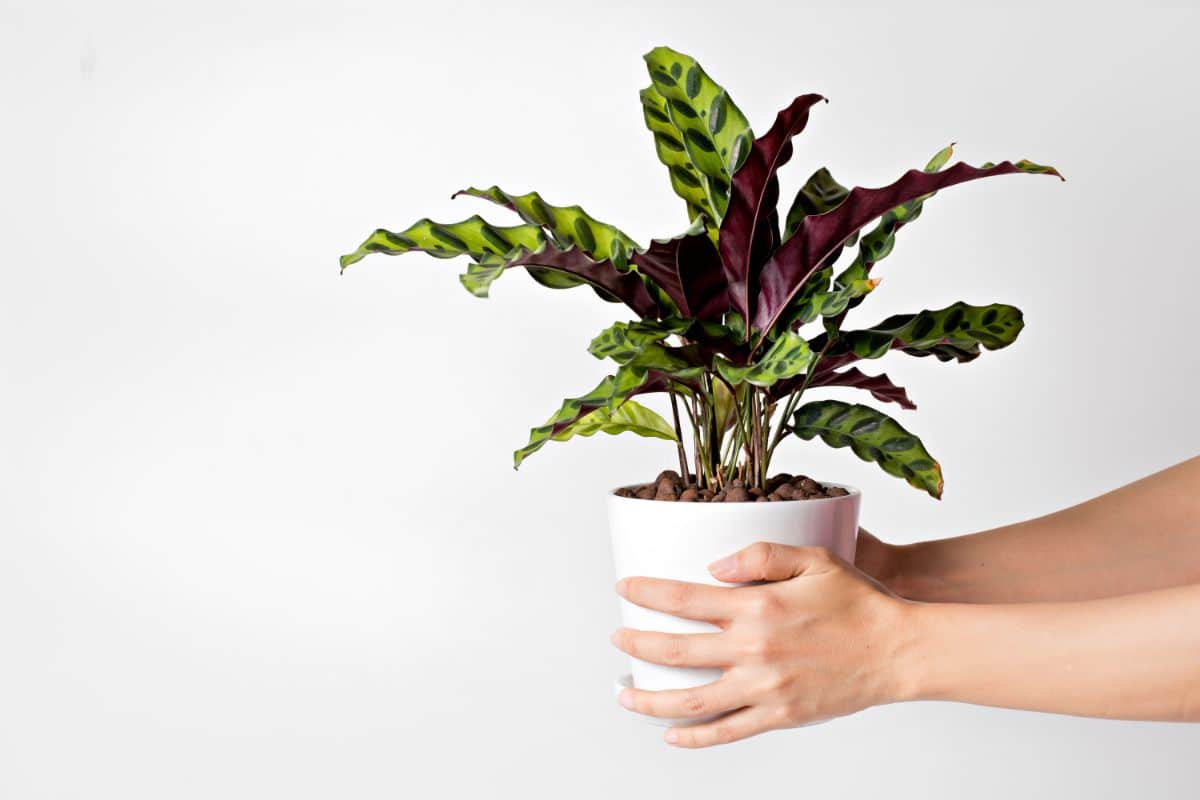
| Plant name: | Rattlesnake plant |
| Lighting: | Bright, indirect light |
| Watering: | Moderate, frequent light watering is usually better than deep watering with these specimens. |
| Fertilizer rates (during the growing season): | Monthly |
| Other notes: | Rattlesnake plants need extra humidity of at least 50%. |
- Calathea Lancifolia, or the Rattlesnake Plant, originates from the tropics of Brazil and loves dancing in the moonlight. As a relative to prayer plants, their leaves also fold up at night, which...
- APARTMENT FRIENDLY: Our miniature plants are conveniently sized and brighten up any room or decor
A relative of the prayer plant, rattlesnake plants are native to Brazil and are prized for their colorful lance-shaped leaves. While they do flower in nature, blooming is much rarer when these beauties are kept indoors. However, the patterned leaves will still give you lots to enjoy and the leaf undersides boast a vibrant deep red color for even more visual interest.
If you get the growing conditions just right, you may be able to coax your rattlesnake into flowering in spring or early summer. For optimal care, provide your plant with bright, indirect light and plenty of humidity (at least 50% or higher) with the help of a humidifier.
9. Watermelon peperomia (Peperomia argyreia)
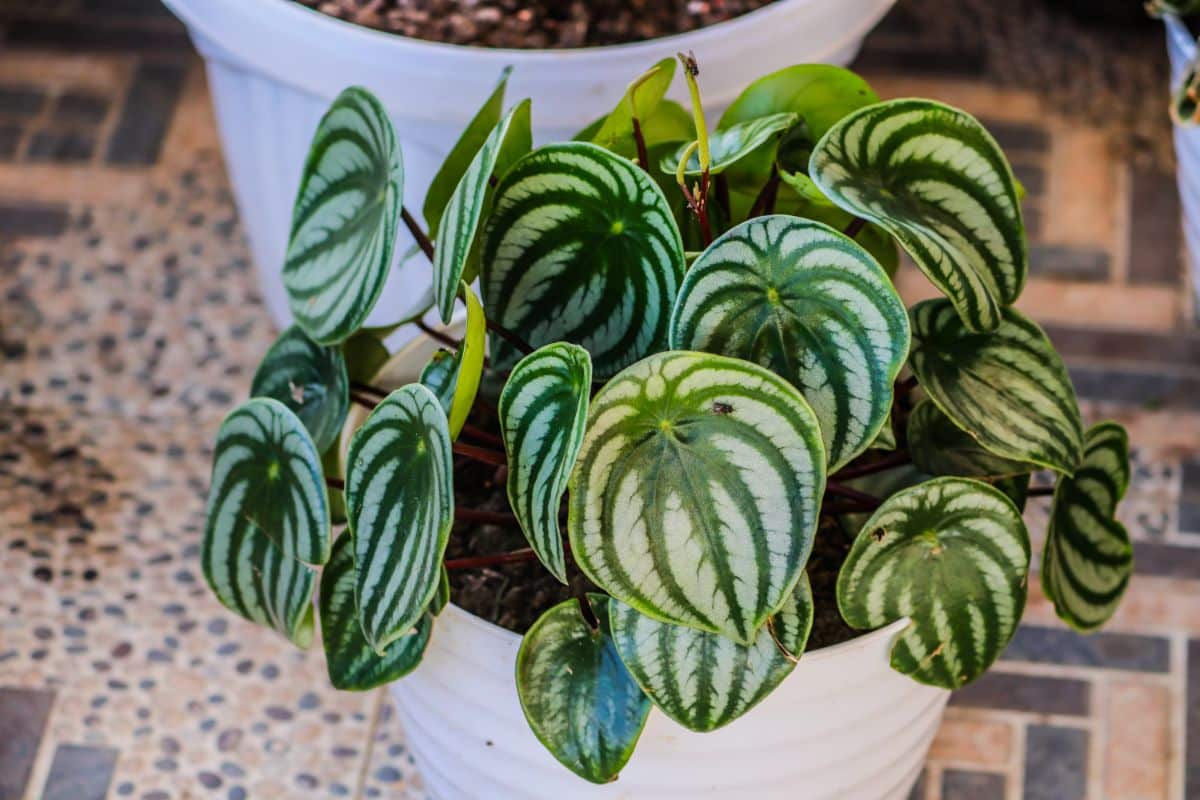
| Plant name: | Watermelon peperomia |
| Lighting: | Bright, indirect light |
| Watering: | Moderate |
| Fertilizer rates (during the growing season): | Monthly |
| Other notes: | Adding crushed eggshells or bone meal to your plant’s soil can provide much-needed calcium. |
- The Watermelon Peperomia has flashy, silver-striped foliage that uncannily resembles our favorite summer fruit: watermelon. It is prized for its unique foliage pattern and low-maintenance care...
- We package and wrap each plant individually with the utmost care. We are very accomodating and receptive. Feel free to message for any issues or requests.
Watermelon peperomias are jaw dropping plants, kept for their fun foliage, which is said to resemble the spotted skin of a ripe watermelon. Vibrant green, variegated leaves are slightly glossy and rounded in shape with tapering ends. Plants grow up to 12” high and are perfect solutions for empty display shelves or easy-care terrariums.
Leaves of these plants may need a little extra TLC to keep them looking their best. Prone to deformation if nutrient levels are subpar, provide your plant with a little extra calcium boost to keep leaves growing their best.
10. Parlor palm (Chamaedorea elegans)
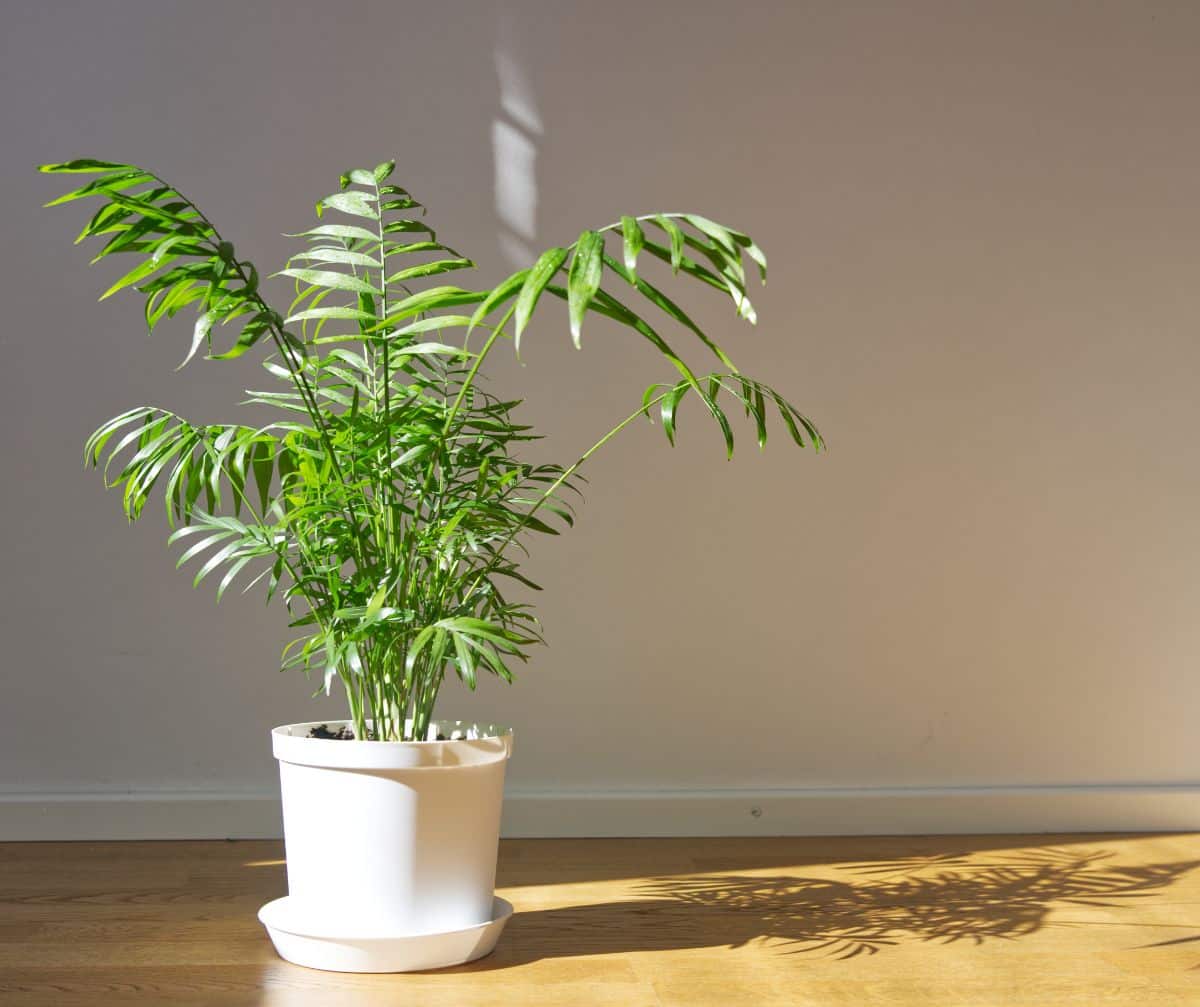
| Plant name: | Parlor palm |
| Lighting: | Bright, indirect light to partial shade |
| Watering: | Moderate |
| Fertilizer rates (during the growing season): | Monthly |
| Other notes: | Boost humidity levels with a humidifier or pebble tray. |
- Parlor Palm Tree: The Parlor Palm Tree, native to rainforests from southeastern Mexico to northern Guatemala, is a small, compact, single-trunked plant with beautiful, arching, green pinnate leaves....
- Sunlight: Low to bright indirect light.
A classic indoor palm, parlor palms became popular indoor plants during the Victorian period, when they were kept as potted specimens in sitting rooms for extra color. Today, parlor palms remain popular choices for homes with pets, as they’re non-toxic and their long, sweeping foliage adds lots of drama to home decors. When properly maintained these stunners can grow between 10 to 12’ high.
Parlor palms can sometimes suffer from inadequate watering or low humidity levels, which can result in leaf drop or browning or yellowing to leaf tips. To keep your plants happier, try to boost nearby humidity levels and keep your palm away from drafty windows, doors and vents during winter.
11. Venus flytrap (Dionaea muscipula)

| Plant name: | Venus flytrap |
| Lighting: | Bright light |
| Watering: | High |
| Fertilizer rates (during the growing season): | Avoid fertilizer |
| Other notes: | Use a potting mix specially formulated for carnivorous plants and keep substrate consistently moist. |
- REAL VENUS FLY TRAP PLANT: Large carnivorous plants that feed on bugs with jaw-like petals aka ‘bug traps’. This dionaea plant is a useful flying and non-flying insect trap, able to grow in a...
- 3 Live healthy actively growing (not dormant) small sized Venus Flytrap Plants
Venus flytraps are a great choice for home with kids or if you’re just looking for something a little bit different. These carnivorous plants are naturally found in boggy areas of the southeastern United States and are known for their ability to capture and devour common pests (like flies) with their lobed and toothed “traps” at the end of their leaves.
Venus flytraps prefer higher humidity levels, so they’re a good choice for a terrarium plant. Just remember that these plants are sensitive to chemicals, so don’t fertilize them and only water them with distilled or rain water. You’ll also want to avoid activating the traps just for fun, as this can deplete the plant’s energy reserves.
12. Inchplant (Tradescantia zebrina)
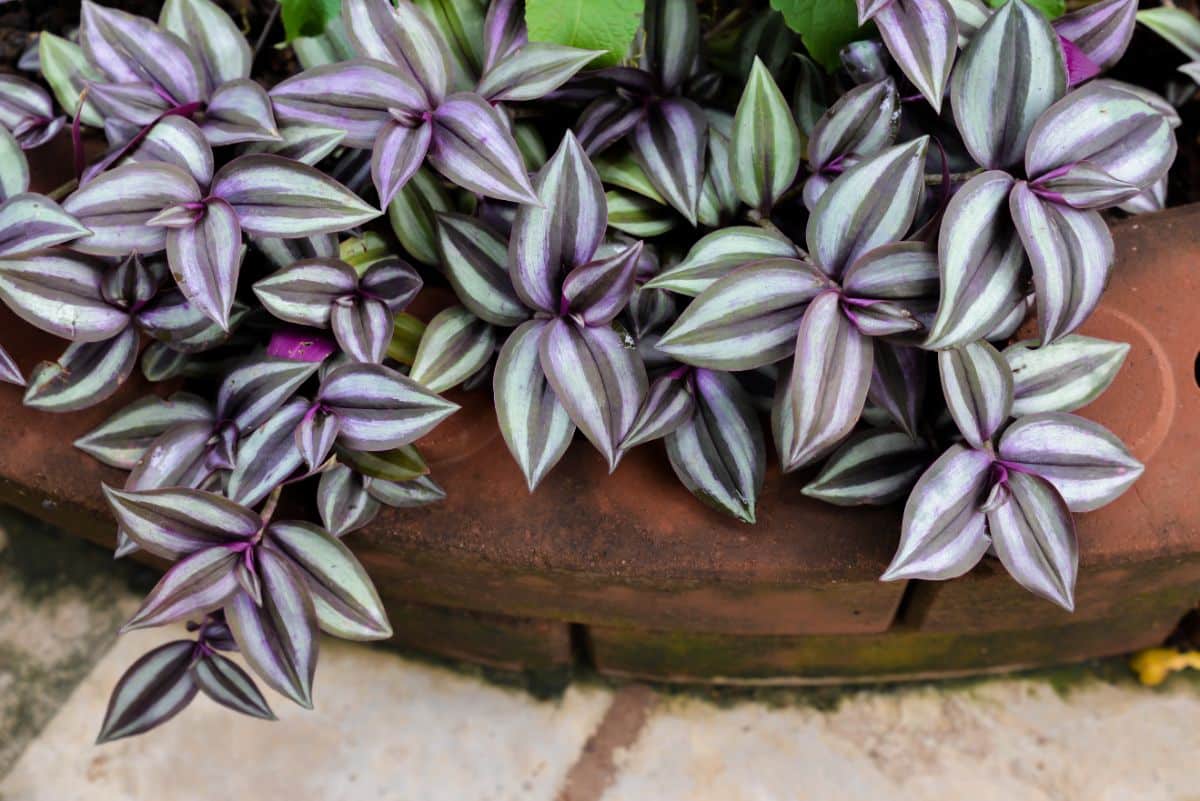
| Plant name: | Inchplant |
| Lighting: | Bright light to bright, indirect light |
| Watering: | Moderate |
| Fertilizer rates (during the growing season): | Every 2 to 4 weeks |
| Other notes: | Tradescantia can be grown outdoors in zones 9 to 11. |
- shipped in inproved box to save the plant
- Striking red foliage with silver stripes Lance-shaped leaves for an elegant look Thrives in bright, indirect light Easy-care and low-maintenance plant Purifies air by removing toxins Increases...
Inchplant, also known as tradescantia, is a colorful, semi-succulent houseplant that’s perfect for beginning growers. Known for its colorful, striped leaves, tradescantia comes in both dark purple and green varieties, both of which have a silvery hue to their leaves for extra color. Fleshy stems grow quiet quickly in a trailing growth habit that’s perfect for hanging baskets or for draping naturally from high shelves.
Inchplants can be prone to root rot, so avoid overwatering your plants and opt for terracotta planters for more breathability. Beyond that, simply provide your plant with bright, indirect light to ensure leaf color remains nice and vibrant. These plants also propagate easily in water so you can share them with friends.
Tips on keeping pets away from your plants
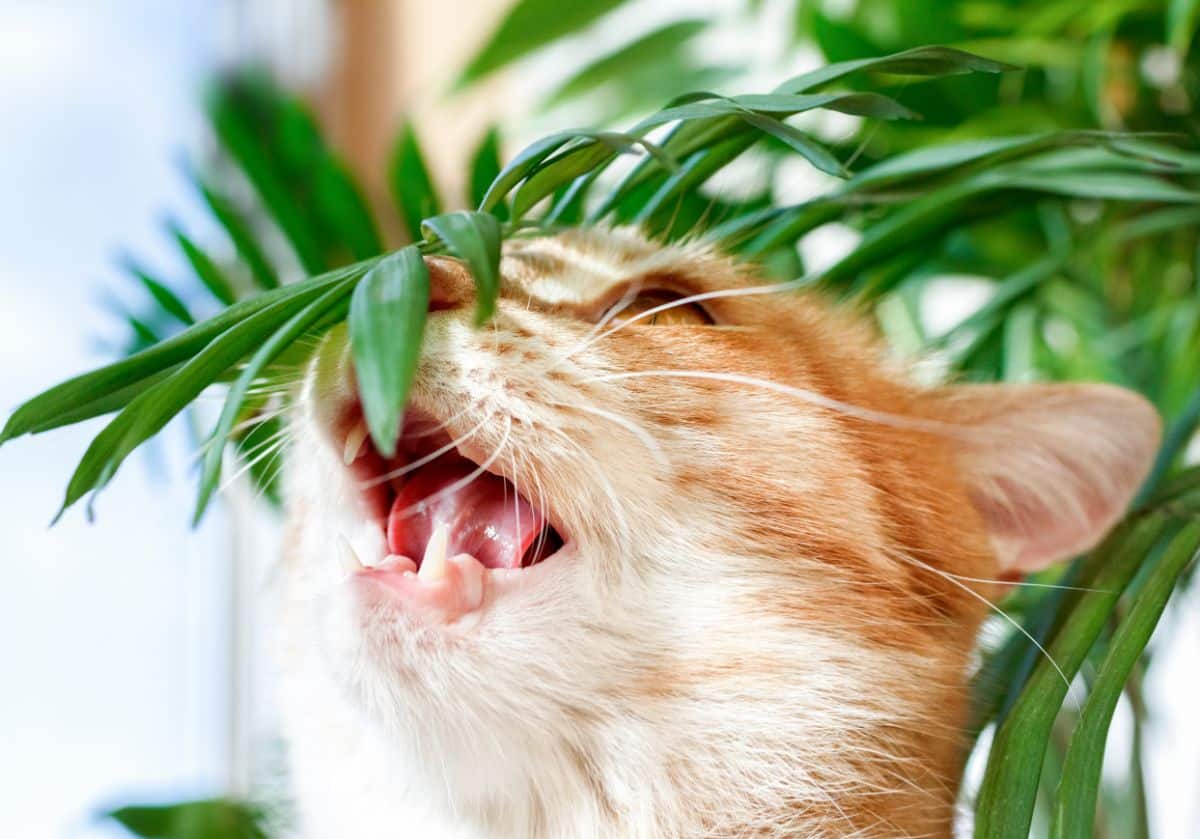
Even if you’re only keeping pet-safe plants, you still will want to protect your plants from your pets, especially if your pets like chewing on leaves. While it may not harm your pets, repeated damage to plant leaves may affect your plant’s health. Some good ways to protect your houseplants include:
- Place your plants in out of the way spots, like hanging baskets or on top of high shelves. Planting in terrariums can help too.
- Avoid locating your plants in areas your pets like to hang out, like favorite a windowsill.
- Grow other plants specifically for your pets to munch on, like cat grass or catnip.
- Try out some pet repellent sprays or plug-ins.
- Keep plant soil covered with wood mulch, small pebbles, clean gravel or inverted plastic forks to discourage digging.
Frequently asked questions
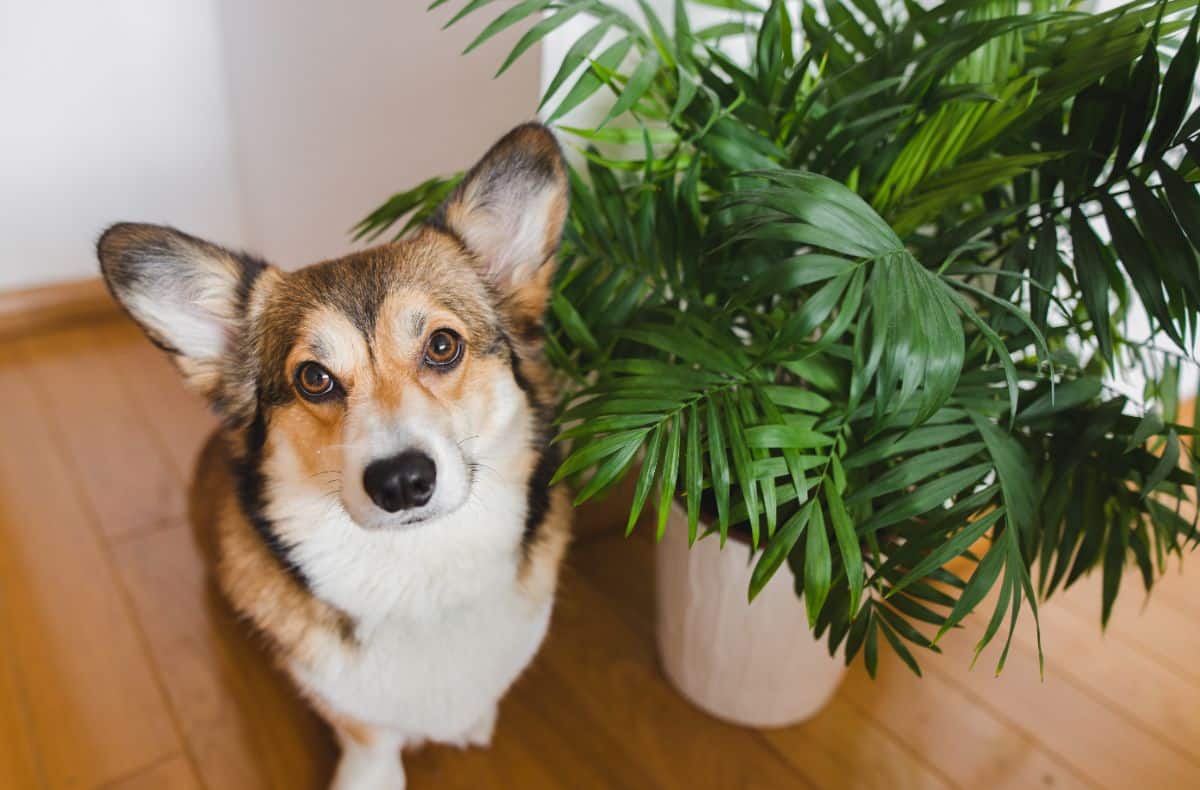
Absolutely! There are plenty of pet-safe plants to keep. Just double check that plants are non-toxic before purchasing them.
The ASPCA has a very comprehensive list of toxic and non-toxic plants. Research whether your plant is pet-safe or not before bringing it into your home.
Some plants are known to be particularly toxic to house pets. Some of the worst plants to keep if you have pets include lilies, sago palms and tulip or narcissus bulbs.
One great way to encourage pets to leave your houseplants alone is to grow some pet-friendly plants just for your pets. Two great options are catnip and cat grass.
There are! While you’ll still want to keep your pets away from fertilizers, choosing organic, all-natural options to feed your houseplants will help keep your pets safe. Some good choices are fish emulsion, kelp fertilizer or alfalfa meal.
Summary
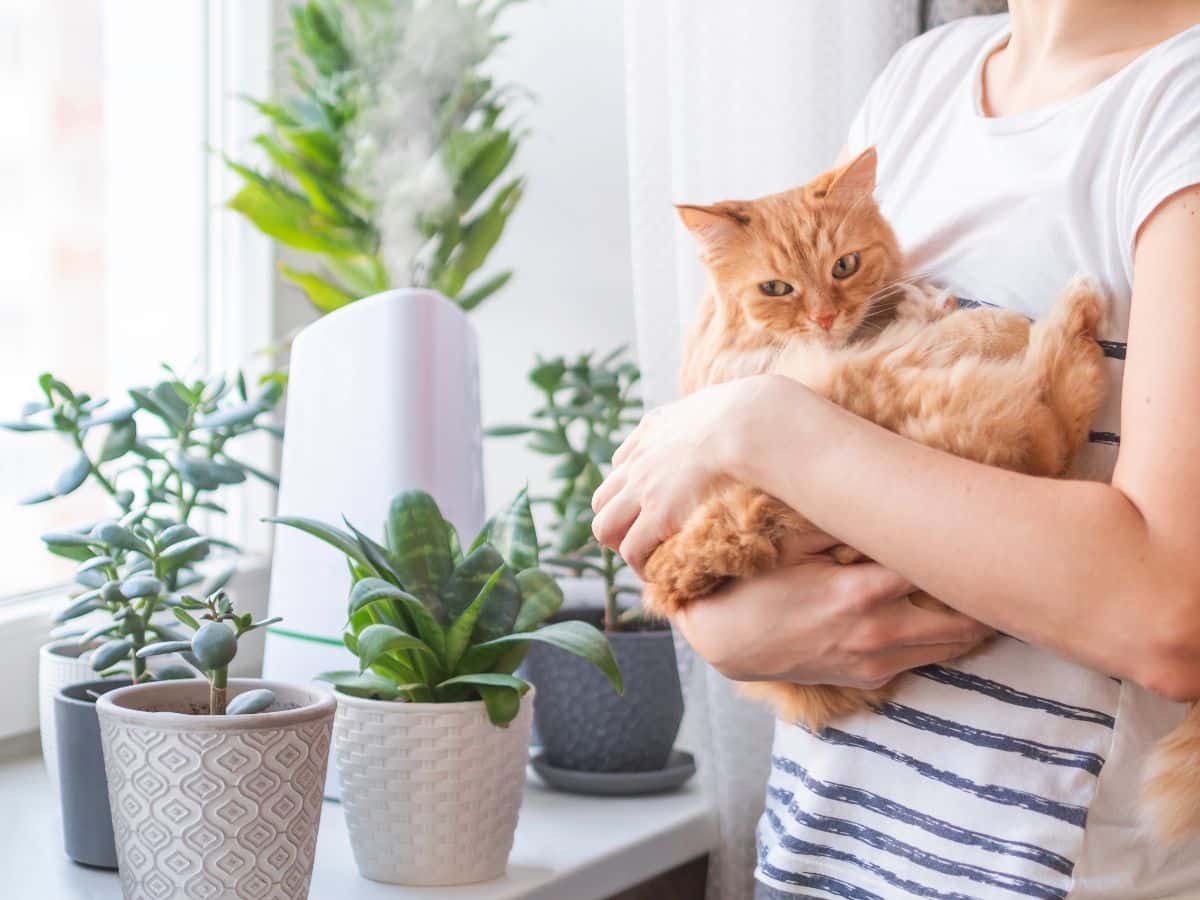
If you love houseplants but you have pets, there’s no reason that your home can’t be full of luscious greenery. Choosing non-toxic plants for your home is a great way to ensure that your pets stay safe, even if they happen to nibble on a leaf from time to time.
If you’d like to learn more about low-maintenance plants, check out our article on easy care bathroom plants we know you’ll love.


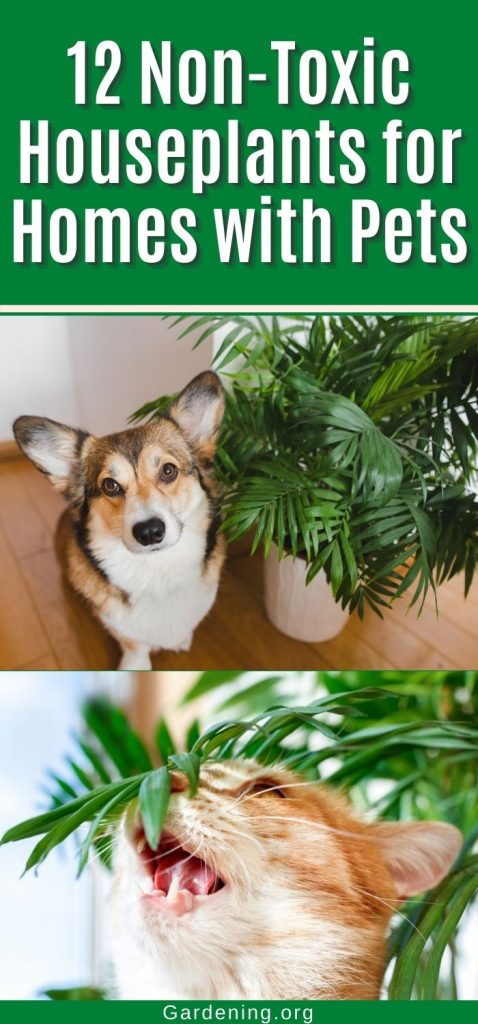
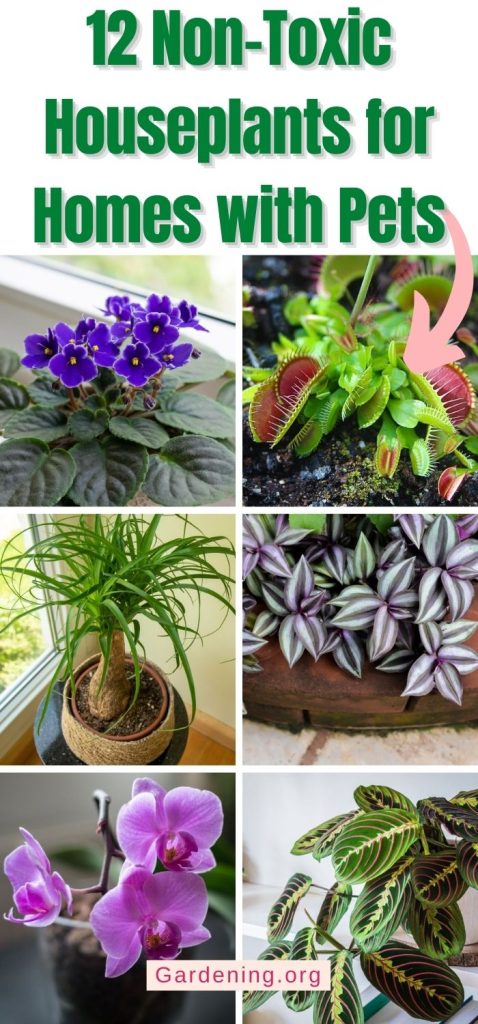
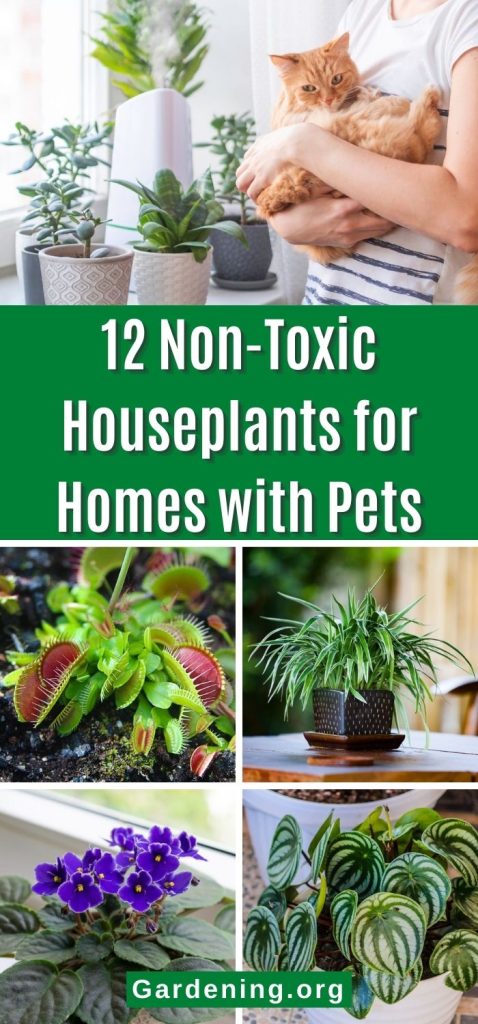
























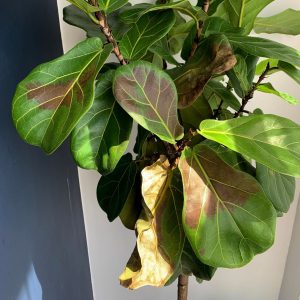
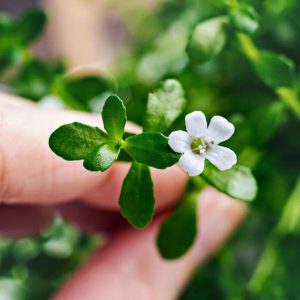
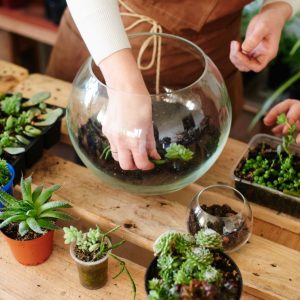
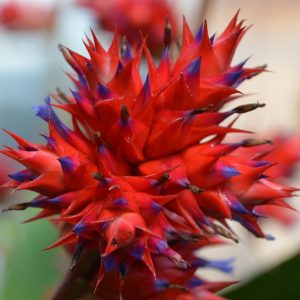
Leave a Reply